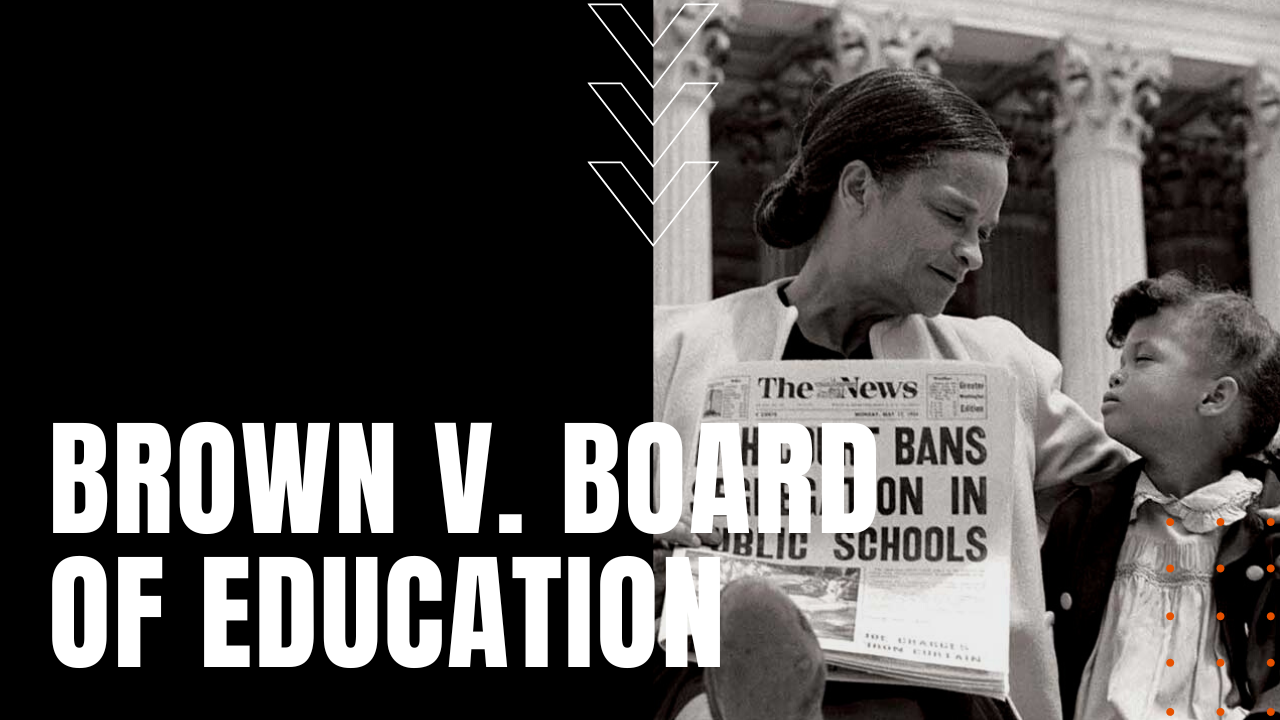Brown v. Board of Education

After the Supreme Court’s 1896 ruling in Plessy v. Ferguson, affirming that racially segregated public facilities were legal, provided facilities for Blacks and whites were equal, the ruling cemented Jim Crow laws, particularly in the Southern states, that would stand for the next six decades to come. By the early 1950s, however, the National Association for the Advancement of Colored People or NAACP began
Law Suits Filed
challenging stedfast segregation laws, filing lawsuits in states like South Carolina, Virginia and Delaware, including a 1951 class-action suit against the Topeka Kansas Board of Education, after Oliver Brown’s daughter, Linda, was denied entrance into Topeka’s all-white elementary schools. Citing the 14th Amendment’s “equal protection clause,” Brown’s suit maintained that Black schools were inferior to white schools, and while the U.S. District Court in Kansas agreed with Brown’s claim, the court continued to
Challenges Plessy v. Ferguson
uphold the “separate but equal” clause from Plessy v. Ferguson. Reaching the Supreme Court in 1952, Brown’s case was combined with four other similar challenges under the name of Brown v. Board of Education of Topeka, the NAACP’s Thurgood Marshall served as chief attorney for the plaintiffs, and while the Supreme Court justices were initially divided on a ruling—Chief Justice Fred M. Vinson firmly
Supreme Court Decision
believing that the Plessy verdict should stand—after Vinson’s death in September of 1953, new Chief Justice Earl Warren engineered a unanimous verdict against school segregation on May 17th, 1954, ruling that segregated schools were “inherently unequal.” Known as Brown v. Board of Education II, in May of 1955, the Supreme Court issued a second opinion that remanded all future desegregation cases to the lower federal court system, the Court’s second opinion opened the door for local judicial and political evasion of desegregation laws and court opinions. The issue of desegregation would come to a
Little Rock Nine
head in 1957 Little Rock Arkansas, when Governor Orval Faubus called in the Arkansas National Guard to prevent Black students from attending Little Rock Central High School, obliging President Dwight D. Eisenhower to deploy federal troops to insure that nine Black students were successfully integrated into the school. Continued white resistance to desegregation, however, did much to fuel the nascent civil rights movement in America, eventually leading to the eradication of Jim Crow laws in the South, making Brown v. Board of Education, a landmark ruling in a nation’s slow embrace of racial equality.
